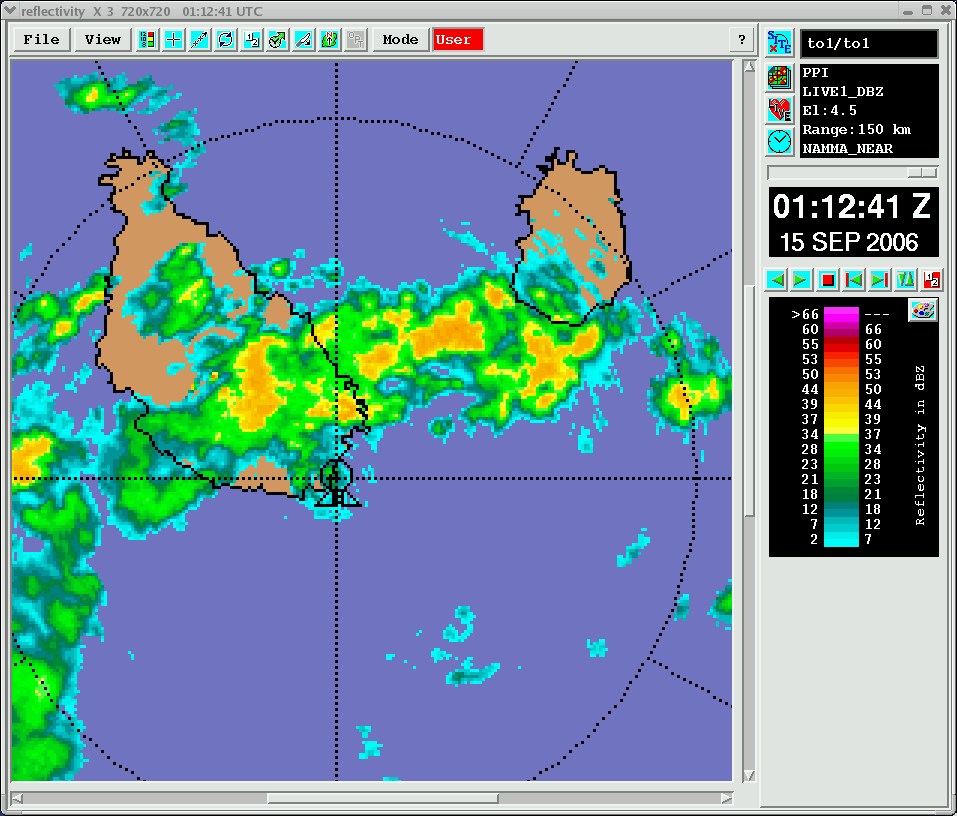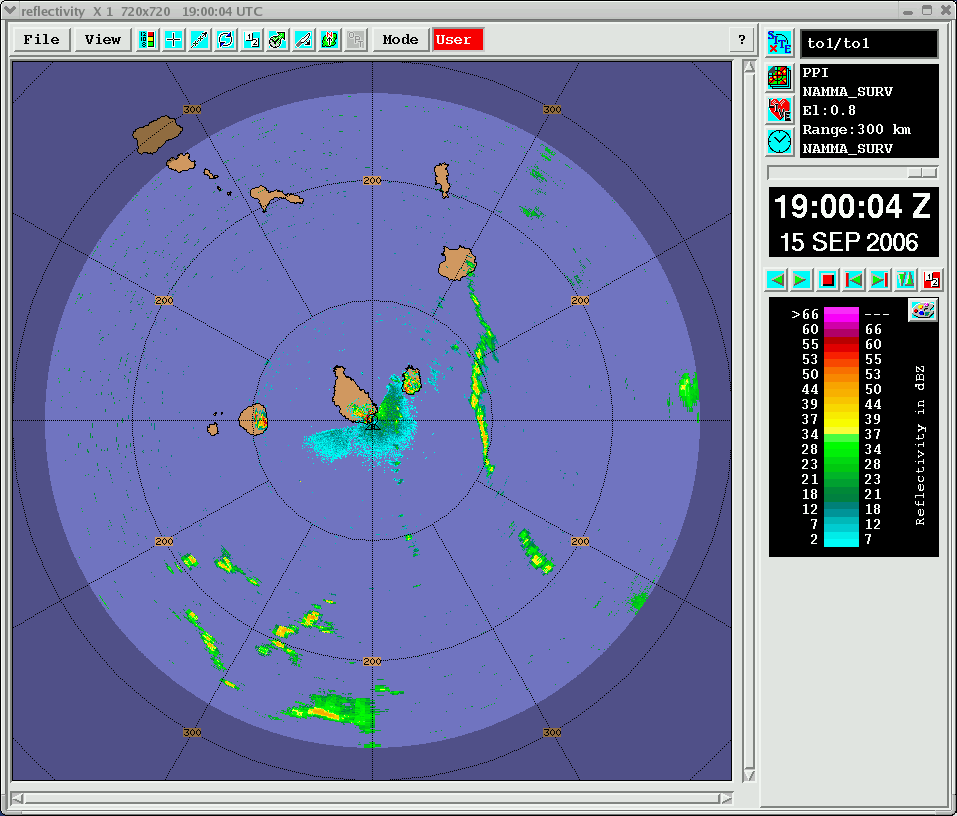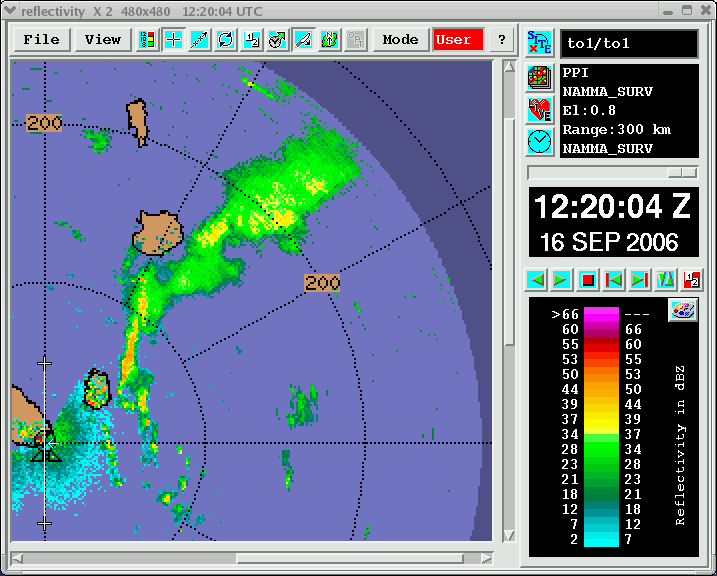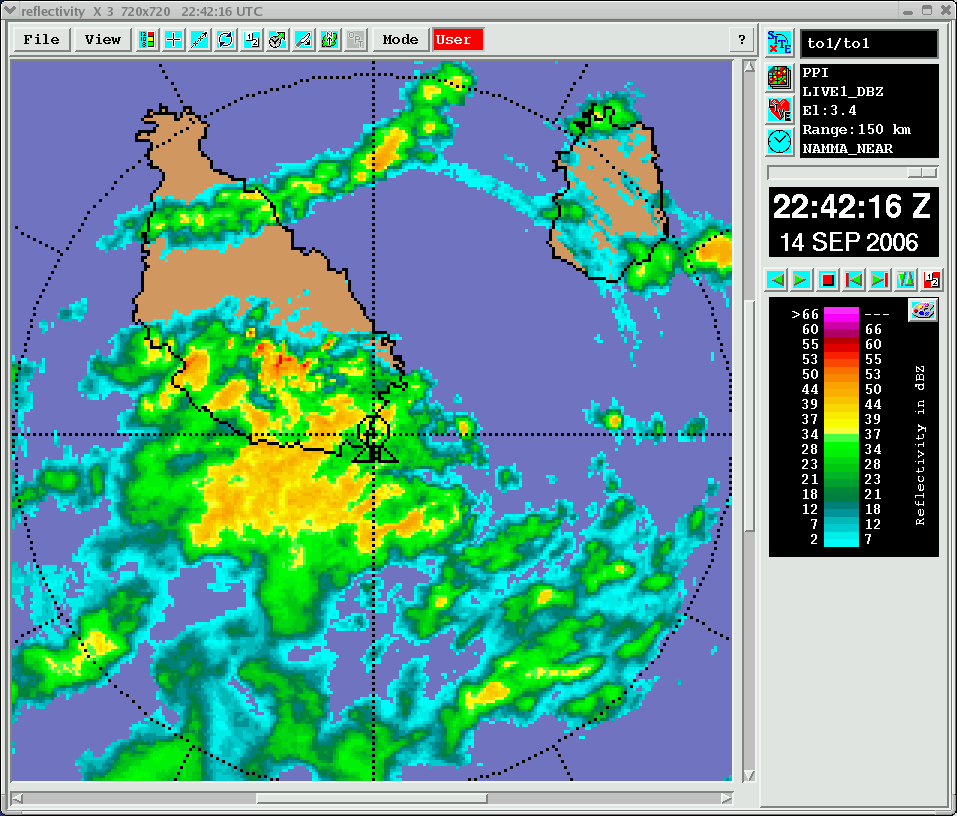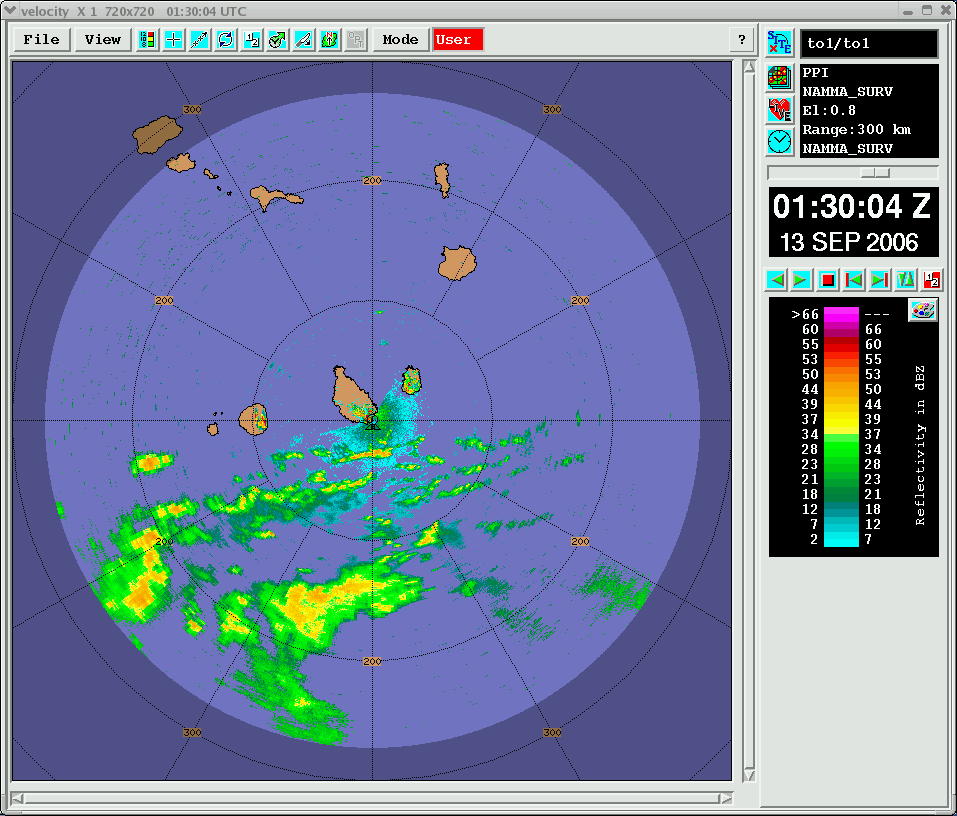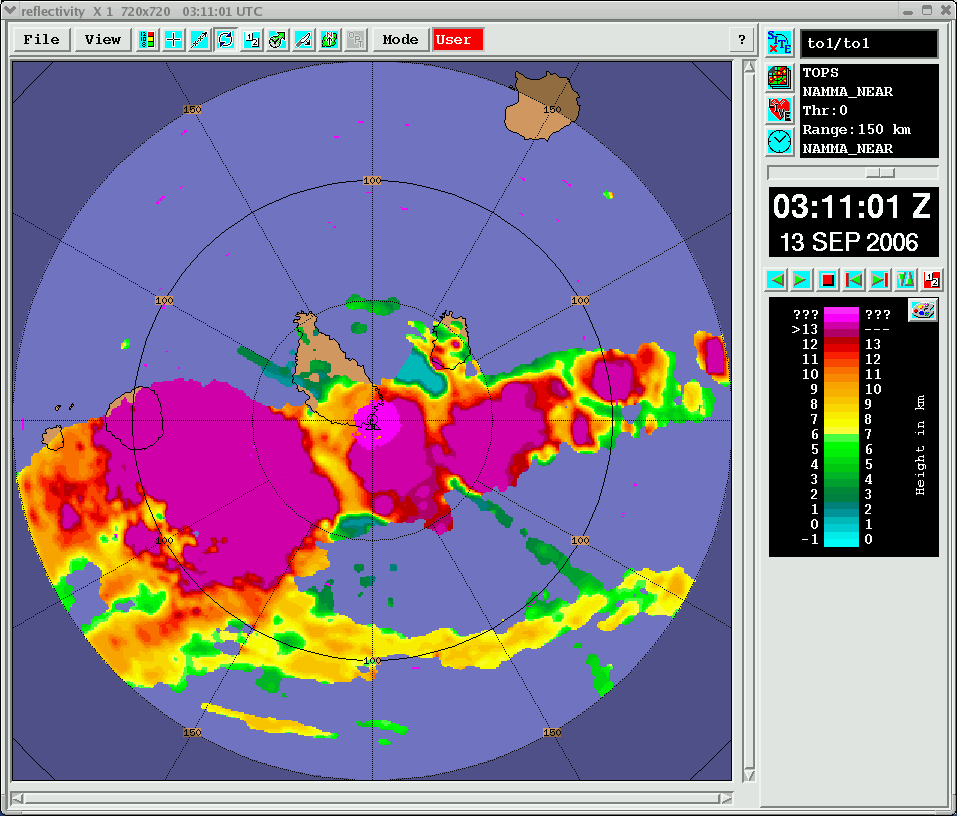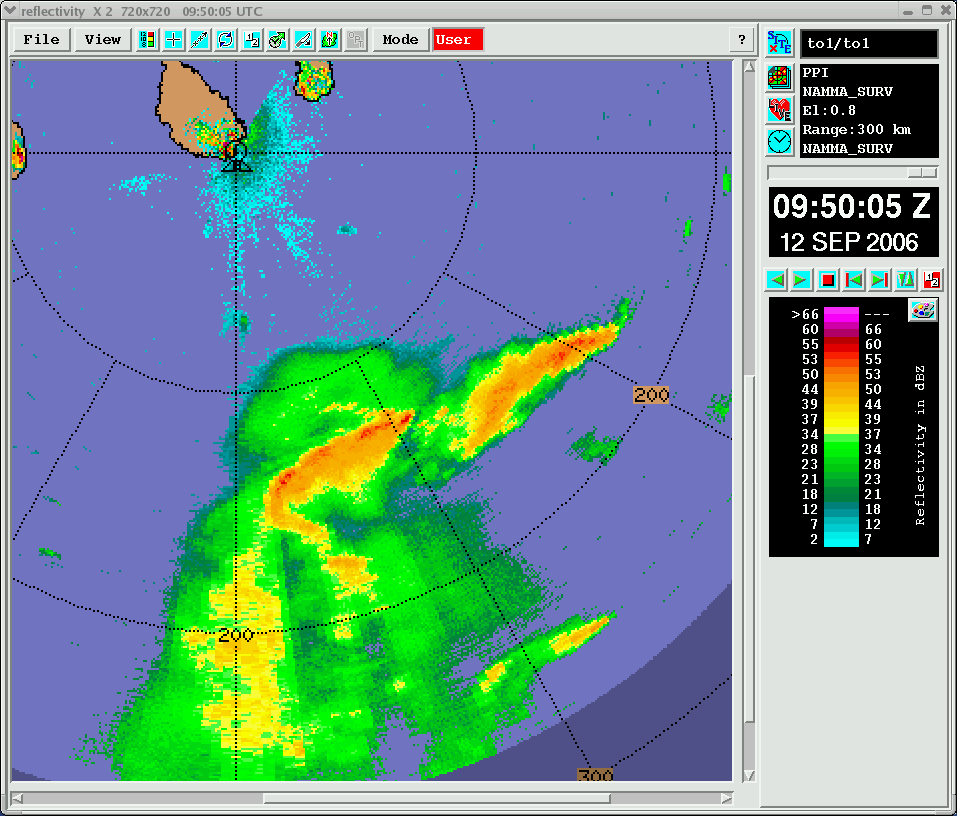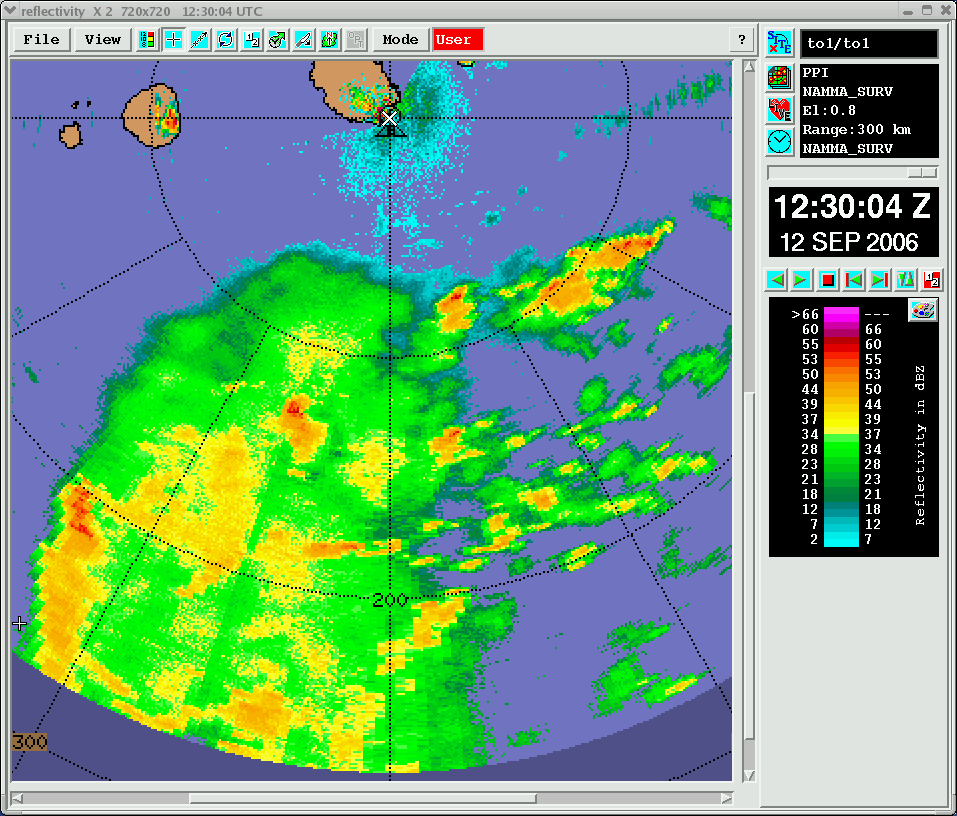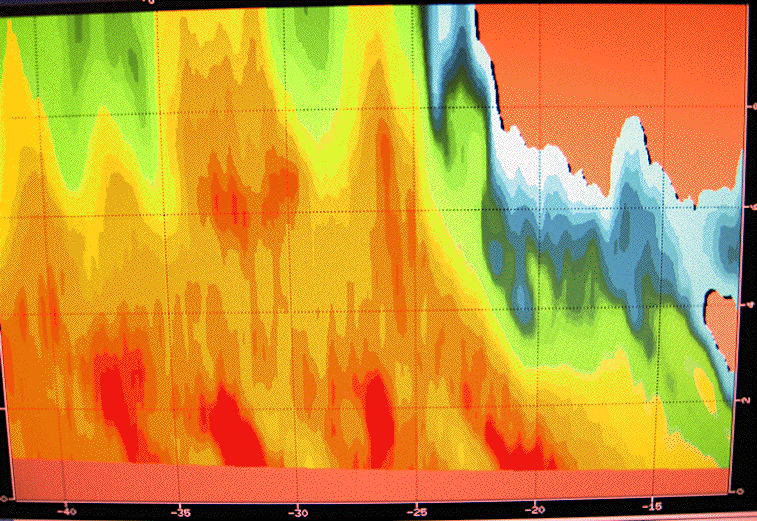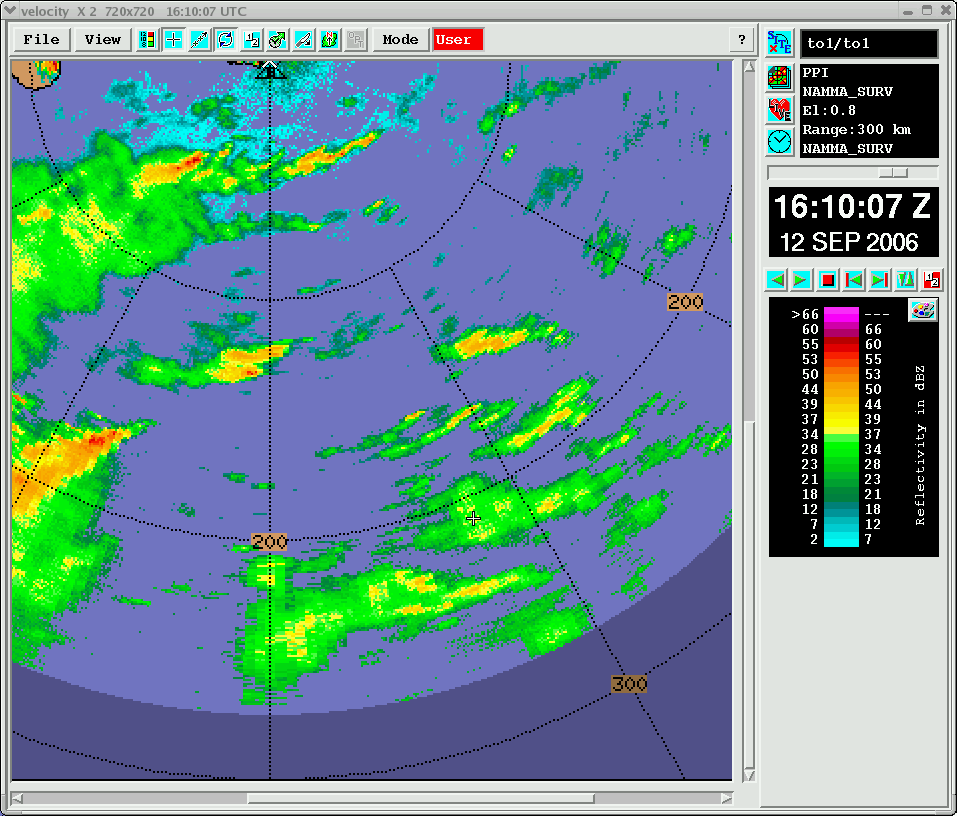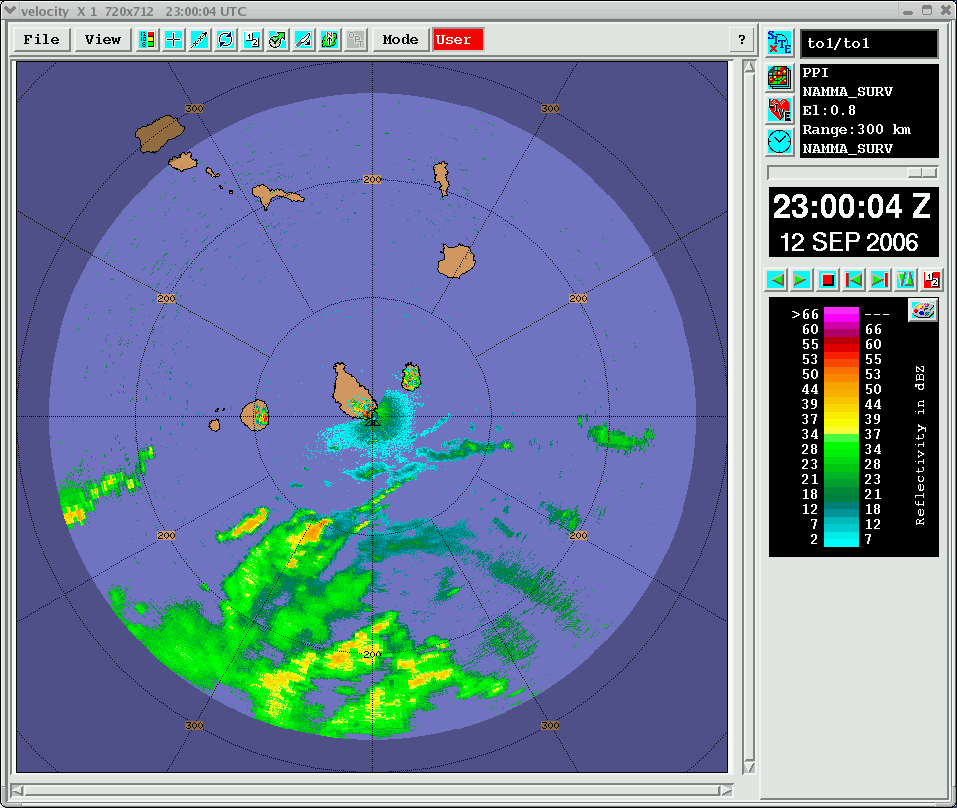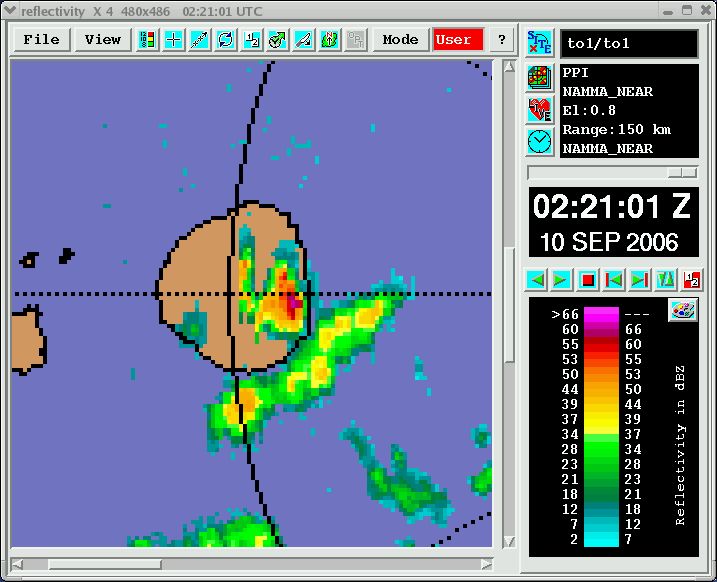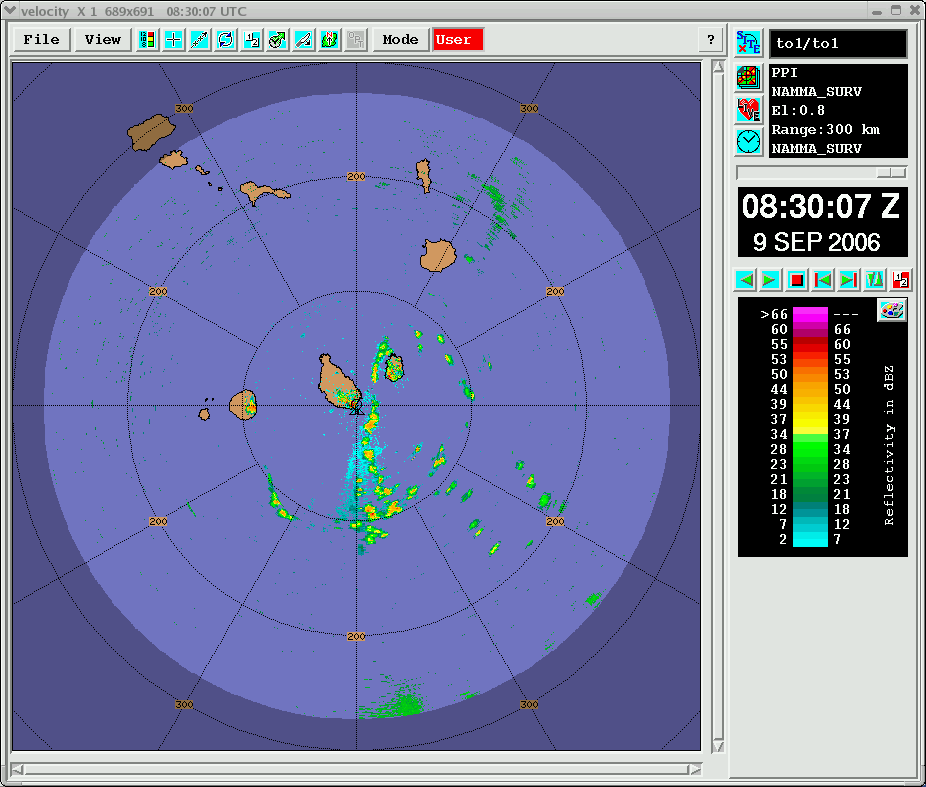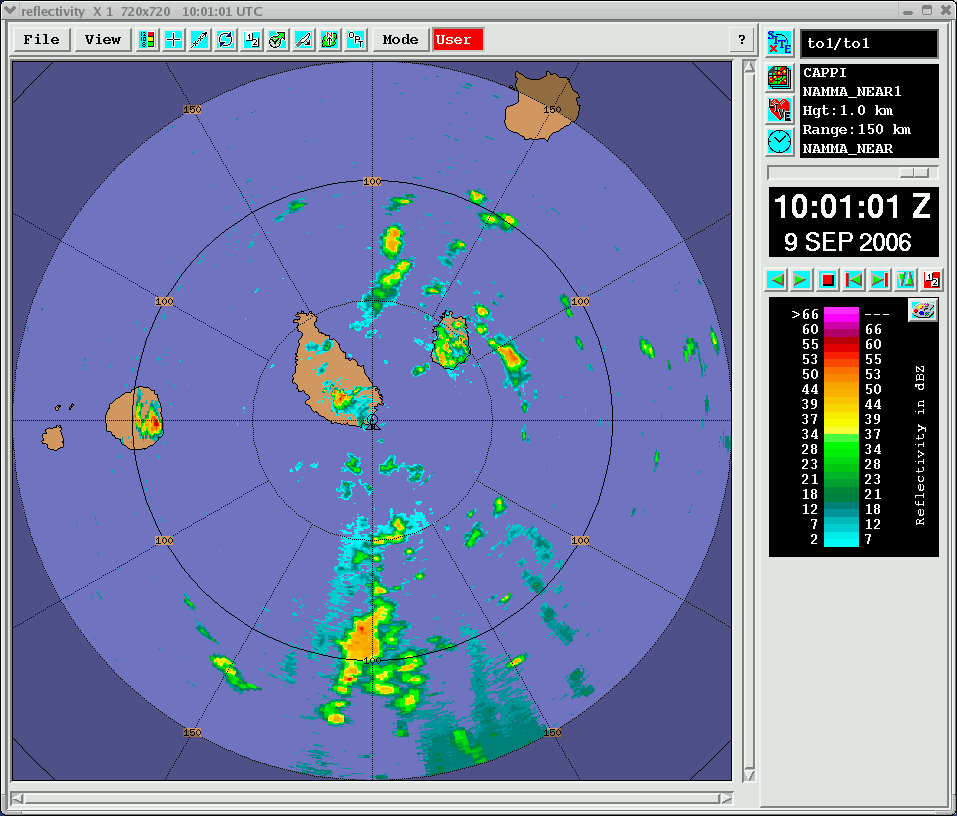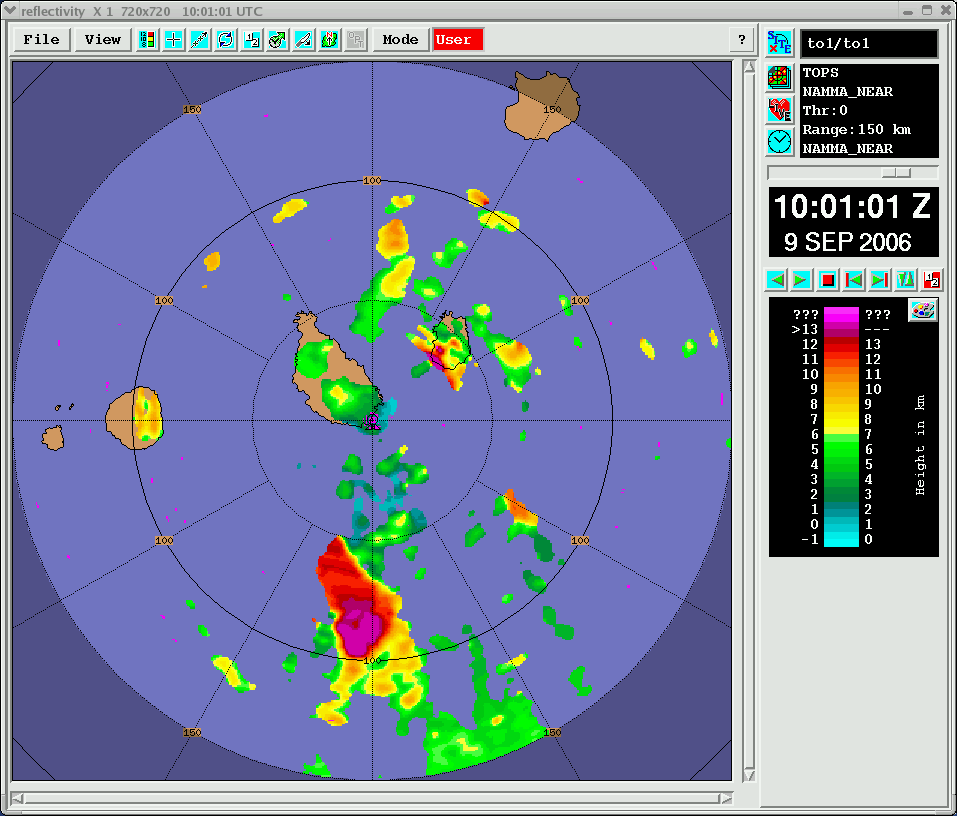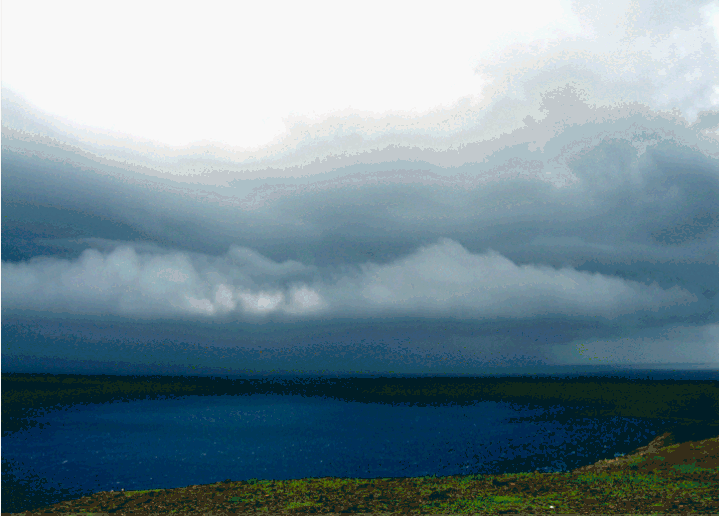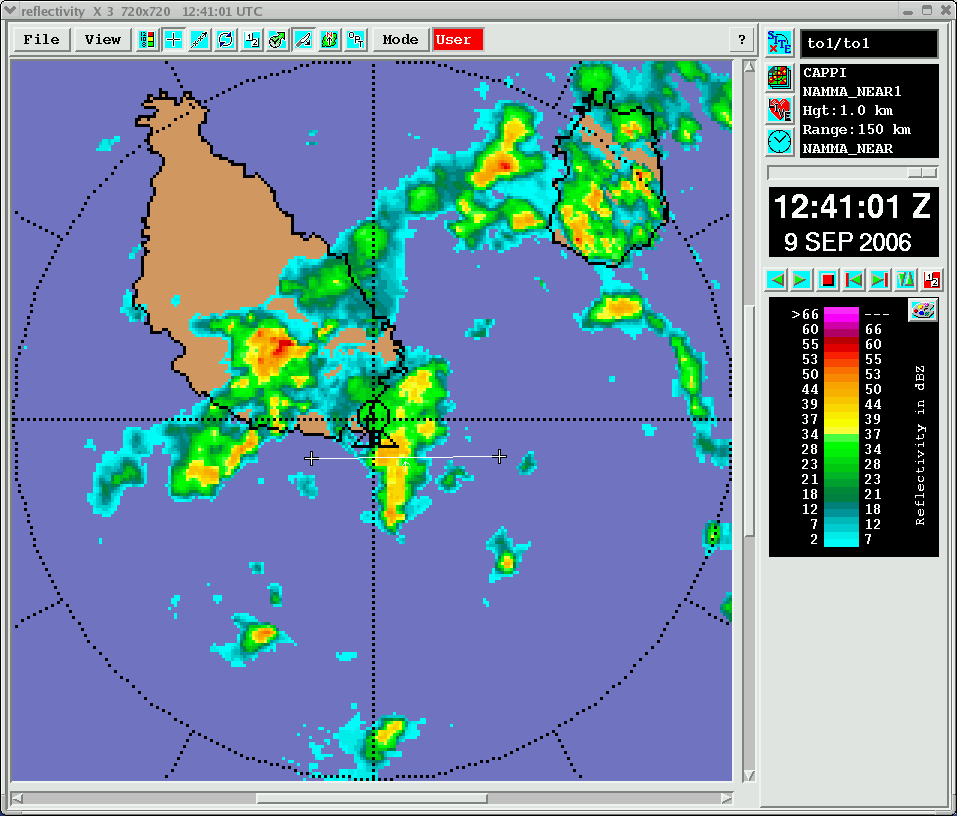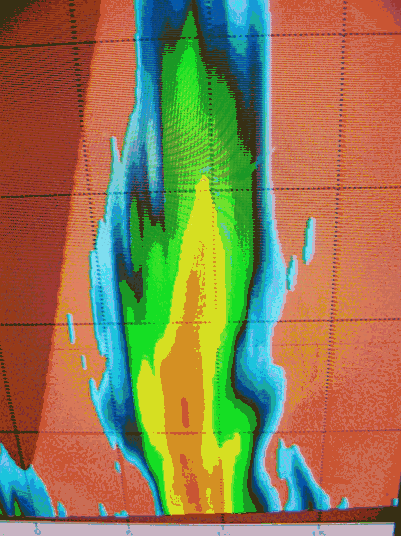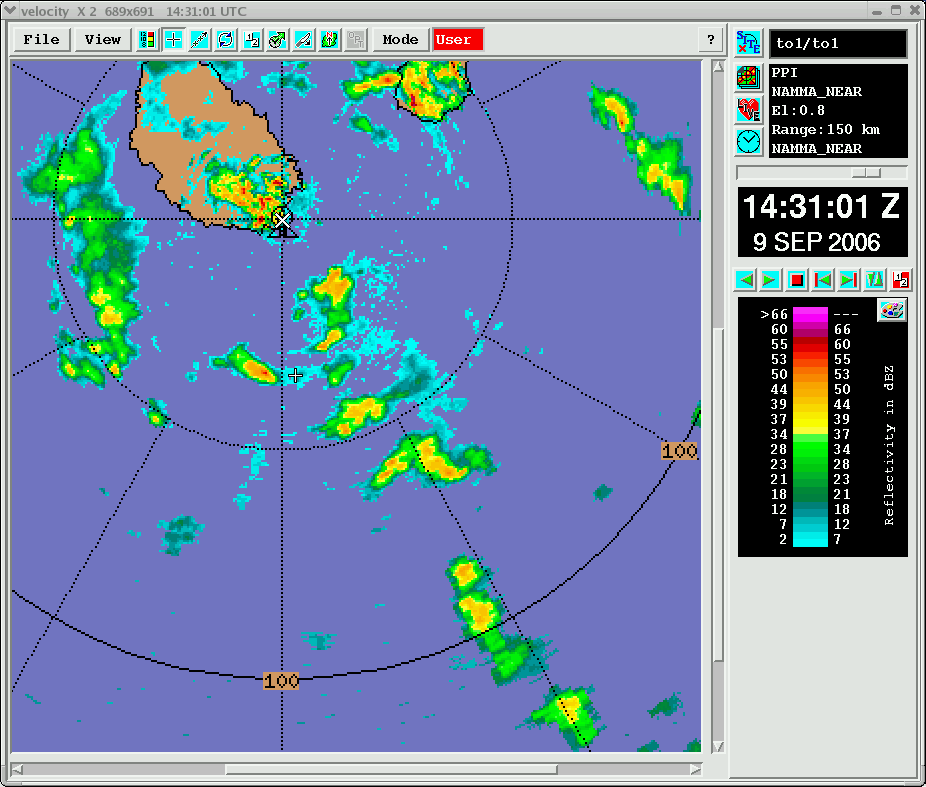Summary of TOGA Operations for 15-16 September, 2006
October 14th, 2006
The initial hours (0000-0700 UTC) of 15 September were spent documenting the evolution and demise of a heavy precipitation event over/surrounding Sao Tiago island. An additional E-W band of convection north of Praia (Image-1) appeared poised to pass southward over TOGA, but effectively dissipated in-place before doing so. Midday on the 15th, a weak but tenacious W’ward propagating squall type system entered TOGA’s surveillance domain (Image-2). This squall soon dissipated (Image-3), but generated a solitary wave that was soon accompanied by a line of 40+ dBZ cores (Image-4). This line propagated westward at a slow but steady speed of ~4-5 m/s over a period of 4+ hours before dissipating immediately east of TOGA just before 0000Z 16 September. On the morning of 16 September, TOGA captured the approach of a cyclonically curved band and demonstrably rotating area of stratiform echo (Image-5) associated with a larger scale cyclonic circulation edging W’ward off the African coast. With time, the more distant stratiform echo dissipated but a lengthening N-S band of convective precipitation (along which individual cells were swept rapidly southward by prevailing N’ly flow) neared Sao Tiago island before losing coherence, perhaps due to interference by local terrain (Image-6). Recording was halted at 1600 UTC so that a final suite of calibrations could be performed. This marked the close of TOGA’s scientifically-staffed operations in conjunction w/ NAMMA. (Scroll downward past RHS menus to access attached images) ..
